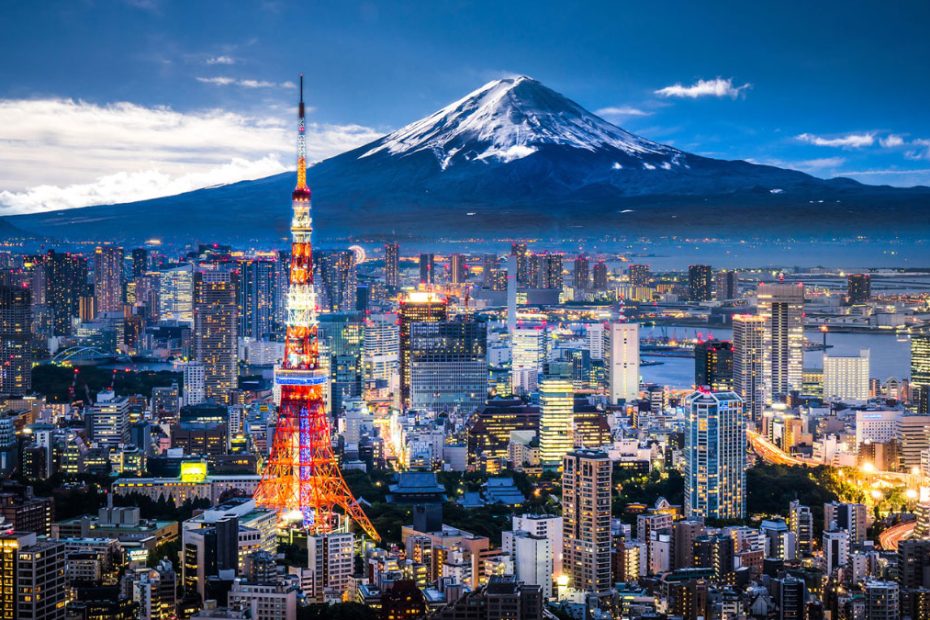Planning a trip to Japan and feeling overwhelmed by all the incredible places to see? I get it. Japan offers a blend of traditional culture and cutting-edge modernity that can make it tough to decide where to go and what to do.
Key Takeaways
- Comprehensive Itinerary: The 10-day itinerary includes visits to Tokyo, Kyoto, Nara, Osaka, and Hiroshima, offering a balanced mix of modernity, tradition, and historical reflection.
- Tokyo Highlights: Spend the initial three days exploring Tokyo’s iconic landmarks, vibrant districts, and unique cultural hubs, such as Asakusa and Akihabara.
- Kyoto and Nara Heritage: Immerse yourself in Kyoto’s rich cultural heritage with visits to temples and gardens, and enjoy a serene day in Nara, known for its ancient temples and friendly deer.
- Osaka’s Vibrancy: Experience Osaka’s lively food culture, bustling nightlife, and historical landmarks like Osaka Castle and Dotonbori.
- Historical Reflection in Hiroshima: Dedicate a day to Hiroshima’s Peace Memorial Park and Museum for a profound historical experience, complemented by sampling local cuisine.
- Final Explorations in Tokyo: Conclude your trip with final explorations and shopping in Tokyo’s popular districts, ensuring a well-rounded and memorable journey.
Overview of the 10 Days Itinerary in Japan

A 10-day itinerary in Japan covers the main island of Honshu, blending old traditions with new innovations. My itinerary tailors to different travel styles and preferences.
Day 1-3: Tokyo
Tokyo’s vibrant atmosphere captivates visitors. The first three days include visits to iconic landmarks like Tokyo Tower and a wander through diverse neighborhoods like Shibuya and Shinjuku. Exploring districts, you’ll experience the unique culture Tokyo offers. Don’t miss cultural hubs like Asakusa for a taste of ancient Japan and Akihabara for modern anime culture.
Day 4-5: Kyoto
Kyoto’s rich cultural heritage is unmissable. Spend two days here visiting famous temples and gardens, such as Kinkaku-ji (Golden Pavilion) and Fushimi Inari Shrine. Enjoy traditional Japanese cuisine in this historic city. Take a serene walk through the Arashiyama Bamboo Grove and experience a traditional tea ceremony.
Day 6: Nara
Nara’s ancient temples and gardens offer a peaceful retreat. Devote a day to visiting Todai-ji Temple, home to Japan’s largest bronze Buddha statue, and Nara Park, where you can feed friendly, free-roaming deer. The city’s history and serenity make it worth exploring.
Day 7-8: Osaka
Osaka, known for its vibrant food culture, awaits. Spend two days here visiting the famous Osaka Castle and exploring the bustling Dotonbori area. Try local dishes like takoyaki and okonomiyaki. The city’s lively nightlife and shopping districts, such as Shinsaibashi, provide endless entertainment.
Day 9: Hiroshima
Hiroshima’s historical significance is profound. Dedicate a day to visiting the Hiroshima Peace Memorial Park and Museum. These sites offer sobering reflections on history. Enjoy local okonomiyaki, a savory pancake, which adds to the cultural experience.
Day 10: Return to Tokyo
Return to Tokyo for final explorations and last-minute shopping. Areas like Harajuku and Ginza offer unique shopping experiences. Reflect on the diverse experiences Japan provides before departing.
This 10-day itinerary provides a balance of cultural immersion, historical exploration, and modern experiences. The blend of Tokyo’s modernity, Kyoto’s tradition, Nara’s serenity, Osaka’s vibrancy, and Hiroshima’s history encapsulates Japan’s essence. Each city contributes to a well-rounded travel experience.
Day 1: Arrival in Tokyo

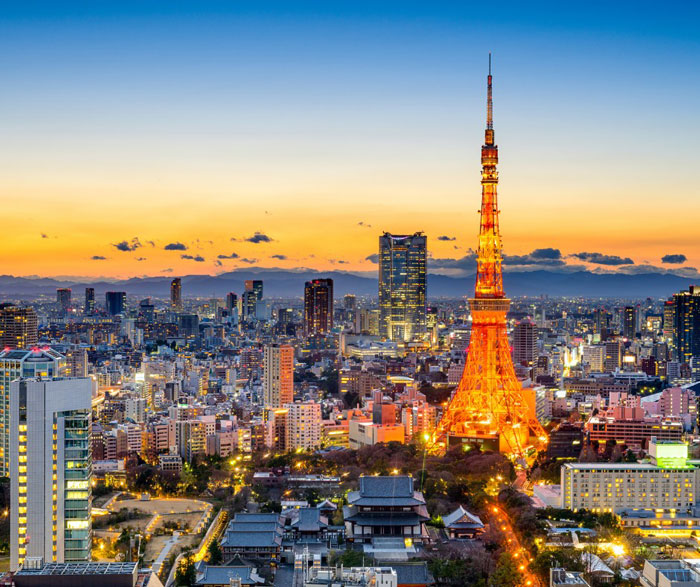
Starting my journey in Japan, I landed in Tokyo, brimming with anticipation. This sprawling metropolis offers an electrifying blend of modernity and tradition.
Exploring from the Airport
Two airport options serve Tokyo: Narita International Airport (NRT) and Haneda Airport (HND). Haneda is closer to the city but has fewer international flights. On arrival, I had to decide the best transport option to reach central Tokyo.
- From Narita: For a swift journey, I opted for the Narita Express (NEX) train. The trip took about an hour and cost approximately ¥3,250 per adult. This train is well-known for its convenience and comfort.
- From Haneda: For those arriving at Haneda, the Tokyo Monorail offers a quick 15-minute ride to Hamamatsucho Station at a cost of ¥500 per adult.
First Glimpse of Tokyo
After reaching the city, I ensured my connectivity by picking up a pre-ordered pocket wifi at the airport post office. This device proved essential for navigation and communication throughout my trip. Ensuring I had internet access was a crucial part of my travel plan.
Also, I took advantage of the Japan Rail Pass (JR Pass), a great investment for long-distance travel across Japan. I exchanged my voucher for the actual pass upon arrival to avoid the long queues that form later in the day. By securing my pass early, I had smooth travel on the JR lines for the rest of my trip.
Witnessing Tokyo’s bustling streets and towering skyscrapers for the first time was exhilarating. Streets buzzed with activity, illuminated by neon lights – a vivid introduction to what lay ahead in this captivating city.
Day 2: Exploring Tokyo

On the second day in Japan, Tokyo’s blend of modern cityscape and traditional culture awaits. The day’s itinerary includes must-see attractions and culinary delights.
Essential Attractions
- Tsukiji Fish Market: Start the day at Tsukiji Fish Market. Arrive early to witness the iconic tuna auction. Afterward, savor high-quality sushi at one of the numerous on-site restaurants.
- Tokyo Go Kart: Experience the city uniquely by driving a Go Kart through Tokyo’s famous spots. This enjoyable activity offers a different perspective of the city’s vibrant streets and landmarks.
- Odaiba: Head to Odaiba, Tokyo’s bayside district. Capture stunning photos with the Rainbow Bridge as the backdrop. Explore the Toyota Mega Web, an automobile theme park showcasing the latest advancements in vehicle technology.
- Ginza: Visit Ginza for a premium shopping experience. Browse luxury brands like Gucci, Hermes, and Chanel alongside more accessible stores like Uniqlo. Ginza’s blend of high-end and affordable options caters to all tastes.
- Harajuku: Conclude the day’s exploration at Harajuku. Immerse yourself in Tokyo’s dynamic fashion and shopping culture. The district is particularly lively at night, offering a unique atmosphere.
- Sushi Dai: Nestled in the Tsukiji Fish Market, Sushi Dai is renowned for its fresh, mouth-watering sushi and long lines. Arrive early to enjoy a memorable breakfast or brunch.
- Maidreamin: Visit the famous Maidreamin, one of Tokyo’s most popular themed cafes. It’s located in Akihabara and offers a whimsical dining experience with playful, costumed servers.
- Ichiran Ramen: For an efficient yet delectable dining experience, head to Ichiran Ramen. This popular chain allows diners to enjoy their meal in focused solitude, enhancing the flavor of the renowned tonkotsu ramen.
- Gonpachi: Dine at Gonpachi, the restaurant that inspired the setting for Quentin Tarantino’s “Kill Bill.” Located in Nishi-Azabu, this restaurant serves traditional Japanese fare in a distinctive, cinematic atmosphere.
- Kawaii Monster Cafe: Experience the whimsical Kawaii Monster Cafe in Harajuku for a colorful and playful dining adventure. The vibrant decor and imaginative dishes create a unique gastronomic experience.
Exploring Tokyo on the second day encapsulates a mix of tradition, modernity, and culinary excellence.
Day 3: Day Trip to Nikko
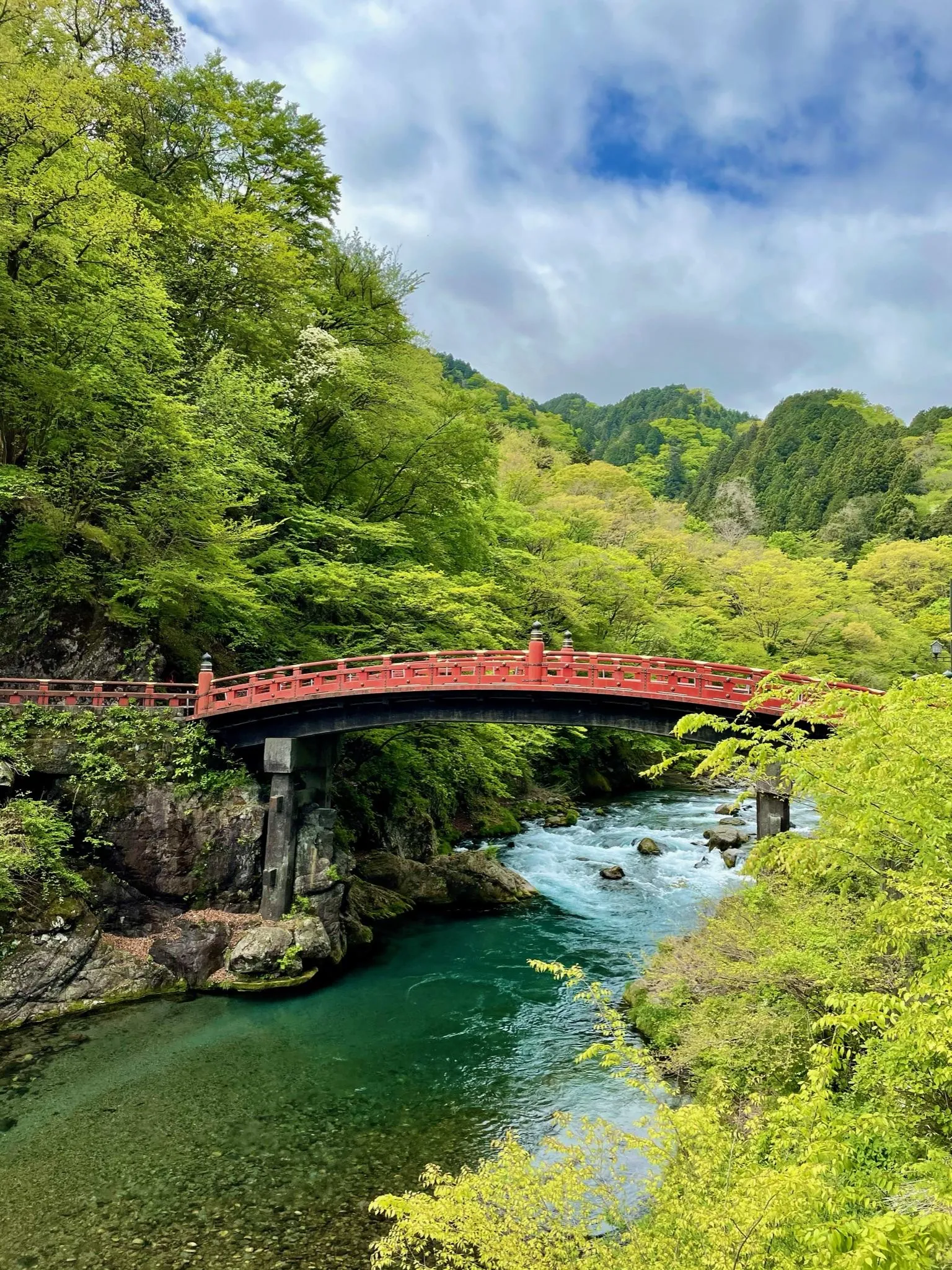
Top Sights in Nikko
Arriving in Nikko, I’m struck by the serene beauty and historical significance of the area. My first stop is the Toshogu Shrine, a lavishly decorated complex dedicated to Tokugawa Ieyasu, the founder of the Tokugawa Shogunate. Intricate carvings and gold leaf embellishments on the buildings make Toshogu both a visual and spiritual experience.
Next, I head to the Rinnoji Temple, an important Buddhist site founded by Shodo Shonin, the monk who introduced Buddhism to Nikko. The temple’s main hall, Sanbutsudo, houses significant Buddhist statues of Amida, Senju-Kannon, and Bato-Kannon. Beneath the canopy of tall cedar trees, it’s an immensely peaceful place.
A short walk leads me to the Shinkyo Bridge, a stunning red vermillion bridge that appears to float over the Daiya River. Connected to the shrines and temples, it offers a mesmerizing photo opportunity.
For nature lovers, a visit to the Kegon Falls shouldn’t be missed. Located in the Nikko National Park, these 97-meter-high falls are breathtaking, especially viewed from two observation platforms. The elevator ride down to the base gives a more intimate look at the cascading waters.

Travel Tips
While planning my Nikko day trip, I discover several useful tips to enhance the experience. For transportation, I take the bullet train from Tokyo Station to Nikko via the Tohoku Shinkansen to Utsunomiya Station, then transfer to the JR Nikko Line. The journey lasts about two hours. I use my Japan Rail Pass for seamless travel.
I pack light, carrying only essentials to keep my hands free and the experience more enjoyable. Comfortable walking shoes are a must due to uneven terrain and long paths. I also bring a small backpack with water, snacks, a travel guide, and an umbrella in case of sudden rain.
Nikko’s weather varies, so I recommend checking the forecast and dressing in layers. The spring and autumn seasons are the best times to visit due to pleasant weather and beautiful foliage. Local eateries serve delicious yuba (tofu skin), a Nikko specialty, so I make sure to try it out.
Finally, I respect the cultural norms by maintaining silence at sacred sites and following signs and guidelines. This ensures a harmonious and respectful visit. Following these tips makes my Nikko day trip smooth and memorable.
Day 4: Tokyo to Kyoto

Traveling from Tokyo to Kyoto offers a seamless blend of efficiency and comfort with the nation’s superior rail system.

Best Travel Options
The bullet train (Shinkansen) remains the best travel option for this route. I took the Hikari or Nozomi train which covers the distance in roughly 2 hours and 20 minutes. Using the Japan Rail Pass, though a bit more restrictive, offers an economical choice with unlimited train travel. Before boarding, I secured my pass and reserved my seat to ensure a smooth journey.
Packing light and checking the weather made my trip more comfortable. The onboard amenities like reclining seats, clean restrooms, and food carts enhanced the travel experience. Upon arrival at Kyoto Station, conveniently located near major attractions, I immediately felt the historical ambiance of Kyoto.
Evening Activities in Kyoto
Kyoto’s evening atmosphere felt both serene and rich with cultural heritage. I started with a stroll along the Philosopher’s Path, a pleasant walk along a cherry-tree-lined canal, especially beautiful during sakura season. This quiet path offers a perfect end to a busy day.
Afterward, Ginkaku-ji Temple, known as the Silver Pavilion, provided a peaceful retreat. The sand garden and moss-covered grounds impressed me with their aesthetic appeal and simplicity.
In the evening, I visited Kotonoyado Musashino, a traditional Japanese inn with private onsen baths. This experience felt intimate and relaxing, giving me a taste of Japanese hospitality.
Finally, I wandered around Kyoto’s undercover shopping arcades and enjoyed Kyoto Tower’s panoramic city views. Each activity added to my Kyoto experience, blending cultural enrichment with modern conveniences.
Day 5: Historical Kyoto

Kyoto, with its wealth of history, offers a journey through time, from ancient temples to traditional tea ceremonies. This day is dedicated to immersing in Kyoto’s rich cultural heritage.
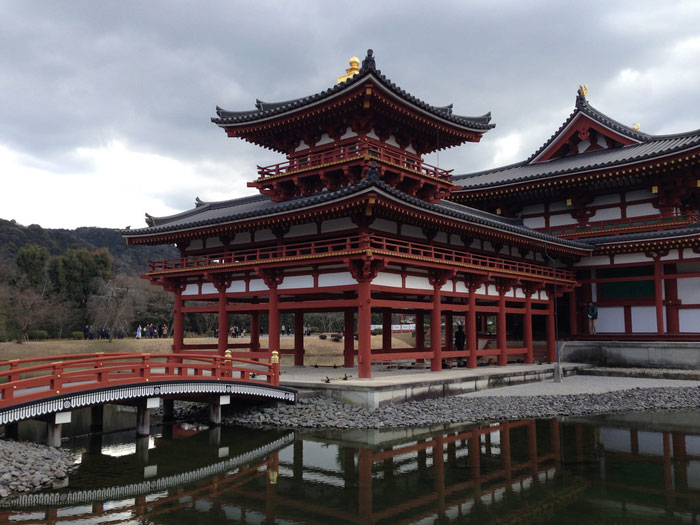
Must-See Temples and Shrines
I started my day in the tranquil Arashiyama Bamboo Forest. This serene spot, often a secret date location for locals, provides a peaceful escape with its towering bamboo stalks. Near the forest, I visited several temples like Tenryu-ji, a Zen temple with beautiful gardens, and enjoyed views of the wild monkeys at Iwatayama Monkey Park.
Next, I moved on to the Saiho-ji Temple, also known as the Moss Temple. Its lush, green moss garden was a unique and mesmerizing sight. I had to make a reservation in advance to visit, as the entry requires joining a special ceremony. Afterward, I explored the Kennin-ji Temple, which is known as the oldest Zen temple in Kyoto. Its famous dragon screen paintings were a highlight of the visit.
Ending the morning, I walked through the Fushimi Inari Shrine, renowned for its thousands of red torii gates. The path leading up Mount Inari offered scenic views and a spiritual experience like no other.
Traditional Tea Ceremonies
In the afternoon, I headed to Maikoya to participate in a traditional tea ceremony. Maikoya offers various experiences, including kimono rentals and tea ceremonies tailored for families and honeymooners. The ceremony was a graceful and meditative process that allowed me to appreciate the art of tea-making.
During the ceremony, I learned about the history and etiquette of tea in Japan. Wearing a kimono added to the authenticity of the experience, and the tea master’s guidance made the experience both informative and relaxing.
I later took a leisurely stroll around the Gion Geisha District, famous for its traditional wooden machiya houses and geisha culture. While there, I had the chance to see geisha and maiko (apprentice geisha) as they made their way to evening appointments. This area captures the essence of Kyoto’s historic charm and offers plenty of quaint tea houses and restaurants.
Ending the day in Gion, surrounded by the soft glow of lanterns and the sound of traditional Japanese music, was perfect. The district’s ambiance reflected the timeless beauty of Kyoto.
Day 6: Day Trip to Nara

My journey continues with a day trip to Nara, a city renowned for its historic treasures and serene parks.
Key Attractions in Nara
- Todaiji Daibutsu
Todaiji Daibutsu hosts the world’s largest bronze Buddha, completed in 752. The statue stands around 15m tall and contains 130 kg of pure gold. Behind the Buddha, there’s a massive wooden column with a small hole; crawling through it brings enlightenment.
- Kofuku-ji
Kofuku-ji, a significant UNESCO World Heritage site, features Japan’s only 5-storey pagoda. Dating back to 730 AD, the current pagoda structure was rebuilt in 1426. This historic site offers a glance at ancient architecture and spiritual practices.
- Nara Park
Encompassing 660 hectares, Nara Park is a vast park home to over 1,200 wild deer that roam freely. Legend speaks of a white deer carrying a god to Kasugataisha Shrine, making these deer sacred. The park also serves as an entry point to other historic sites.
Interaction with Deer in Nara Park
Interacting with deer in Nara Park becomes a magical experience. The deer, considered messengers of gods, roam freely and often approach visitors. You can buy deer crackers, or “shika senbei,” to feed them. These crackers are available from vendors throughout the park. Feeding these gentle creatures is a delightful activity, though one should exercise caution as some deer can be quite persistent. Respecting their space while enjoying their company ensures a memorable and safe experience in Nara Park.
Day 7: Travel to Osaka

Starting day seven, I make my way to Osaka, ready to experience its dynamic urban scene after the serene beauty of Kyoto.
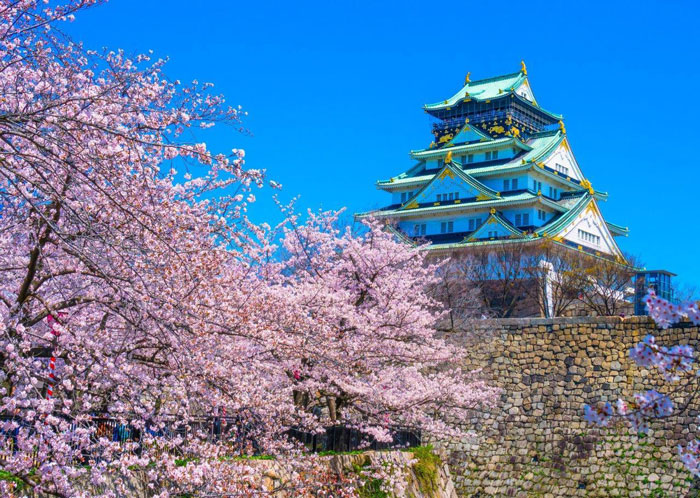
Journey from Kyoto to Osaka
The journey between Kyoto and Osaka typically takes around 55 minutes by train. I opt for the Nozomi bullet train, the fastest option, ensuring a quick and efficient trip. Trains run frequently, so timing my departure is easy. Upon arrival, I step out into one of Japan’s largest cities, eager to explore.
Vibrant Nightlife in Osaka
Osaka’s nightlife is legendary, offering something for everyone. Dotonbori is my first stop. Known for its neon lights, street food, and entertainment, it’s a bustling area where I enjoy takoyaki and okonomiyaki from street vendors.
Next, I head to Shinsaibashi, another popular area where bars, clubs, and restaurants abound. It’s lively and offers a variety of options, whether I want a quiet drink or a night of dancing.
For a theme park experience, Universal Studios Japan is unbeatable. It offers exciting rides and attractions, making for a fun and thrilling evening.
Accommodation in Osaka
Finding a comfortable place to stay in Osaka is easy with several well-rated hotels. Hotel Unizo, reasonably priced and centrally located, is known for its cleanliness and modern amenities. Alternatively, Hotel Gracery in the Shinjuku area is close to a major train station, providing easy access to other parts of the city.
Day seven in Osaka transforms from travel to immersive city experiences, blending cultural exploration with modern attractions.
Day 8: Exploring Osaka
Day eight of my Japan itinerary focuses on exploring Osaka’s rich history, vibrant street life, and local cuisine.
Osaka Castle and Major Landmarks
I started my day with a visit to Osaka Castle, one of Japan’s most iconic landmarks. The castle’s observation deck offers a breathtaking 360-degree view of the city. During February, the peach and plum groves behind the castle show their stunning blooms, a serene alternative to the crowded cherry blossoms of late March.
After soaking in the panoramic views, I headed to Dotonbori. It’s famous for its neon lights and giant billboards, including the iconic Glico Man sign. The area buzzes with energy and has numerous street food stalls. The artistic drain covers dispersed throughout the area add an unexpected charm to the journey.
Next, I explored the Shinsekai neighborhood. Known for its retro vibe, Shinsekai’s unique blend of nostalgia and modernity offers hidden gems and local eateries. The Tsutenkaku Tower, a symbol of Shinsekai, provides another stunning view of Osaka from its observation deck.
Street Food Adventure
Following my castle visit, I made my way to Kurmon Ichiba Market, a haven for food lovers. This bustling market is famous for its street food, and I indulged in several local delicacies. I tried takoyaki (octopus balls), kushi-katsu (deep-fried skewers), and fresh sushi.
The lively atmosphere, combined with the aromatic smells of cooking food, created an unforgettable experience. Street performers and friendly vendors added to the market’s charm.
Back in Dotonbori, I continued my street food adventure. The aroma of okonomiyaki (savory pancakes) filled the air as I wandered through the crowded streets. I also sampled taiyaki, a fish-shaped pastry filled with sweet red bean paste.
Osaka’s culinary scene is a feast for the senses, offering an array of flavors and textures that left me wanting more.
Day 9: Visit to Hiroshima

On day nine, I focused my journey on Hiroshima. This city carries a significant historical weight, yet it thrives with modern vibrancy. My primary destination was the impactful Peace Memorial Park.
Peace Memorial Park
Peace Memorial Park stands as a solemn reminder of Hiroshima’s history. It encompasses various memorials, monuments, and museums dedicated to the victims of the atomic bomb.
- Atomic Bomb Dome: This UNESCO World Heritage site is one of the few structures that withstood the atomic blast in 1945. The skeleton of the building serves as a poignant symbol of the devastation and the hope for peace.
- Hiroshima Peace Memorial Museum: The museum houses detailed accounts of life after the bombing. I found its exhibits on artifacts, such as ceramics fused by extreme heat, deeply moving. The museum’s records provide an insightful look into the catastrophic event and its aftermath.

Local Cuisine
Exploring Hiroshima allowed me to indulge in its unique local cuisine, which offers flavors distinct from other regions in Japan.
- Okonomiyaki: This savory pancake is one of Hiroshima’s culinary specialties. My visit to Okonomimura, a four-story building dedicated to okonomiyaki eateries, was a highlight. Each floor presented different styles of the dish, making it an unforgettable culinary experience.
- Soufflé Pancakes: At Happy Pancake, I tasted Japan’s famous soufflé pancakes. Unlike other popular spots, there were no long wait times, allowing me to enjoy the fluffy, sweet pancakes in a relaxed setting.
Day nine in Hiroshima offered both a reflective look at history and a delightful sampling of the region’s cuisine.
Day 10: Returning to Tokyo

Back in Tokyo for my final day, I’m set to wrap up the journey with some shopping and ensure everything’s packed for departure.
Final Shopping Spree
For the last-minute souvenirs or items I missed earlier, Tokyo offers popular shopping districts. Shibuya, famous for its bustling energy, has everything from fashion to electronics. Shinjuku, with its towering department stores, provides endless shopping opportunities. Ginza, known for luxury brands, is perfect if I’m looking for something special.
In Shibuya, I focused on trendy fashion at Shibuya 109, and for electronics, BIC Camera had various options. In Shinjuku, Takashimaya and Isetan department stores are my go-to places for high-quality goods. Ginza’s Mitsukoshi and Ginza Six present premium selections that make perfect gifts. My shopping spree is a blend of high-energy exploration and last-minute discoveries.
Preparing for Departure
With shopping done, I start packing. I make sure I have all essential items. My passport, travel documents, and flight information go into my carry-on bag. Ensuring I have souvenirs and gifts safely packed, I check my suitcase for anything I might forget.
Next, I plan my travel to the airport. Depending on my flight time, I book a ticket on the Narita Express or the Tokyo Monorail. Both routes offer efficient travel to Narita Airport. Preparing for departure involves a smooth transition. I check my flight details, packed items, and travel routes ensuring a stress-free final day in Tokyo.
Conclusion
My 10-day journey through Japan was nothing short of incredible. From the bustling streets of Tokyo to the serene temples of Kyoto and the poignant history of Hiroshima I experienced a rich world of culture cuisine and unforgettable moments. Each city offered its own unique charm and I left with a deeper appreciation for Japan’s past and present. Whether you’re a history buff a foodie or an avid shopper this itinerary provides a well-rounded adventure. As I packed my bags and headed to Narita Airport I knew I’d be back to explore more of this fascinating country.
Frequently Asked Questions
What is the significance of Hiroshima Peace Memorial Park?
Hiroshima Peace Memorial Park serves as a poignant remembrance site dedicated to the victims of the atomic bomb. It features several memorials and museums, providing visitors with historical insights and a sobering reflection on the impact of nuclear warfare.
Why is the Atomic Bomb Dome considered a UNESCO World Heritage site?
The Atomic Bomb Dome is recognized as a UNESCO World Heritage site due to its symbolic representation of the devastation caused by the atomic bomb and the hope for global peace. It stands as a reminder of Hiroshima’s tragic history and resilience.
What can I expect to see at the Hiroshima Peace Memorial Museum?
The Hiroshima Peace Memorial Museum offers detailed exhibits on the atomic bombing’s aftermath, including personal stories, photographs, and artifacts. It aims to educate visitors on the horrors of nuclear war and promote peace.
What are some traditional foods to try in Hiroshima?
Hiroshima is famous for its okonomiyaki, a savory pancake with various toppings. Another specialty is soufflé pancakes, which can be enjoyed at local eateries like Happy Pancake.
What areas in Tokyo are best for shopping on the final day?
Popular shopping districts in Tokyo include Shibuya, Shinjuku, and Ginza. These areas offer a wide range of options, from trendy fashion and electronics to luxury brands and unique souvenirs.
How should I prepare for departure from Tokyo?
Ensure all essential items are packed and travel arrangements to Narita Airport are confirmed. Double-check flight details, secure travel documents, and consider purchasing last-minute gifts or souvenirs during your final day in Tokyo.

